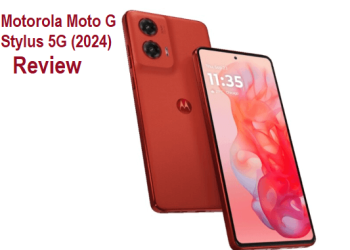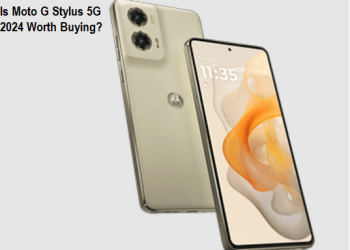Motorola is the company that developed the world’s first commercial handheld mobile phone and, indeed, has come a long way in decades. Motorola has everything from pocket-sized brick phones to smartphones with a rotary keyboard.
Since 1973, with the advent of the Dynatac 8000x, also known as the godfather of mobile phones, Motorola has made a variety of cell phones, messaging phones, clamshell phones, stylish phones, and smartphones.
Browsing old Motorola phones for sale can be a difficult task. To make it easier, we have brought the list of the best old Motorola phone models you can buy in the UK, Canada, the USA, and worldwide in 2024.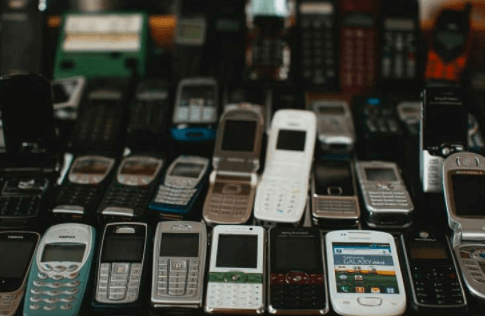
We have included all old Motorola phones from 1973 to 2000. This list also includes flip phones, Razr phones, and others.
Motorola Old Phones Reviews 2024
1. Motorola DynaTAC 8000X (1973)
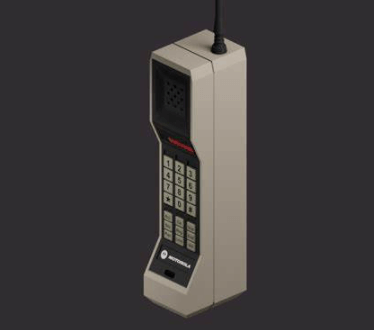
The world’s first mobile phone, the DynaTAC 8000X, is one of Motorola’s oldest phones with an antenna. It became the first commercially available mobile phone and is fondly remembered as an iconic part of the 1970s.
When the phone arrived, the mobile was most likely. It was the world’s first portable handheld phone in the United States since 1973.
At its release, it was considered a symbol of wealth and futurism. It looks old-fashioned and almost comical now, but this phone heralded the future of modern smartphones.
This phone was a rare sight and got attention. People already recognized them on trains, restaurants, and streets. It was large, heavy, and uncomfortable to use, but it met the requirements of stifling demand and was eagerly bought by those who could justify the hefty cost of the handset.
The phone’s antenna, a brick phone, is 8cm wide and weighs 784g, and the antenna alone is only 20cm, so pockets are prohibited.
A 10-hour charge and 30-minute talk time may sound ridiculous today, but their role and importance in opening up the portable chatbox era are not doubted—a true tech icon in every sense.
2. Motorola MicroTAC 9800X (1989)
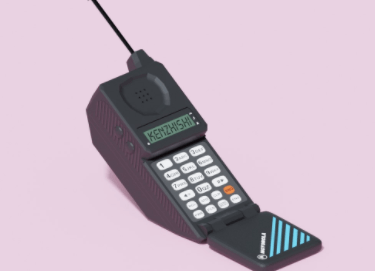
MicroTAC 9800X is one of the old Motorola phones in the 1990s. In 1989, mobile phone service providers lowered the price of handsets to attract new customers. Motorola is starting to dominate the top of the market. MicroTAC 9800X was the little lightweight phone on the market. The other phones were bricks, but the MciroTAC promised a future form.
It was portable and used in almost every music video throughout the late 1980s and early 1990s. Despite the $3000 price tag, the MicroTAC has good reviews. MicroTAC established Motorola’s strategy of producing flagship phones that have often succeeded as the most excellent phones on the planet.
MicroTAC redefines the look of mobile phones and introduces a new form of ‘Flip Phone.’ The Flip became the primary form of Motorola’s premium and mid-range phones.
The 9800X was a groundbreaking product, but in 1989, it solidified Motorola’s promise of an analog phone that was still new. However, the future of mobile communications depends on GSM. Motorola has been slower to adapt to the new game than some of its competitors, perhaps because Motorola had American roots.
3. Motorola Personal M301 (1992)
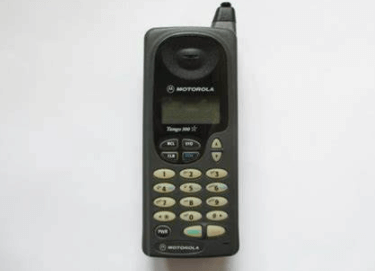
The Motorola Personal phone feels more like a domestic phone than a mobile phone. There is a reason for this. It was Motorola’s first UK consumer phone, and it wanted people to feel like they were in familiar territory.
Motorola introduced the personal phone in 1992. Two providers, Vodafone and Cellnet, dominated the business market, but mobile phones were still too expensive for consumers. Motorola has made this phone as simple as possible. There was no display.
It has a simple button similar to a cordless phone and only three function keys: ‘Power,’ ‘Send,’ and ‘End Call.’ Nothing confuses novice mobile users.
The service provider has taken a classic early-adopter marketing approach, pushing consumer mobile for emergency use rather than targeting top-tier markets. Connection and rental rates are cheaper than business packages, but call rates are higher.
The simple layout of this handset design reflects this approach. Emergency calls will be useless if you have to pick up an instruction manual to figure out how to make a call.
4. Motorola 3200 (1992)
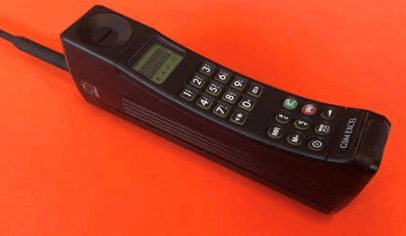
Motorola introduced the 3200 in 1992. This wasn’t their first GSM phone. That distinction returned to the International 1000, a large portable handheld Motorola phone released a year earlier in 1991. However, this was the first Motorola mobile product featured on the GSM.
The Motorola 3200 quickly became the most popular GSM phone in the USA, UK, Canada, Australia, and other big countries. It was expensive at first. Carphone Warehouse sold this phone in August 1993 for £762.
However, the price fell quickly; by 1993, it was the cheapest digital phone. The Motorola 3200 is very collectible today, as it is the only phone that looks like the classic yuppy brick still available on GSM networks. A newer 2G small SIM card is required.
The Motorola 3200 cannot send text messages, but a similarly improved version of the Motorola 3300 can send and receive text messages.
Motorola 3200 works with the latest 900MHz GSM SIM card. They are used on Vodafone and O2 networks in the UK. You don’t need a full-size SIM card.
The original battery for this phone is on the last leg. You can use a new battery, but it’s not necessarily cheap. Most sales phones I’ve seen are aimed at the German market, so the charger has a European plug.
5. Motorola StarTAC (1996)![]()
This is where Motorola made a name for itself in the tech world. StarTAC is the successor to MicroTAC, a semi-clamshell phone released in 1996. StarTAC was one of the consumers’ first mobile phones to be widely adopted.
Launched by Motorola in 1996, the StarTAC was the smallest and lightest mobile phone on the planet. Not only that, but it has also redefined the whole concept of what a cell phone should look like.
The neat clamshell design was the taste of the future. However, the most surprising thing about StarTAC at launch was its price. At an astonishing £1,400, it became Motorola’s most expensive cell phone in the 19s.
Motorola’s StarTAC came with two of the most desirable things of the time, side by side. The old Edman’s trick was to conjure up two people as small and hot as a gold card in one breath.
Perhaps unmatched by any other phone, the StarTAC had an indefinable quality that could be put alongside the most desirable possessions money could buy.
It also had a vibration function; later models could send SMS messages. With 60 million StarTACs sold, it was the iPod of that generation.
6. Motorola D160 (1997)
Motorola was known for luxury phones like the StarTAC. But the company also made bread-and-butter calls for the more modest. If you couldn’t afford a StarTAC in the 1990s, you could buy the D160. It is also remembered as one of the first Pay-as-you-go (PAYG) phones.
The Motorola d160 was a separate product from StarTAC. It was big, heavy, and cheap. This phone and its analog cousin, the a130, were some of the first PAYG phones.
The d160 was the digital version of Motorola’s entry-level analog phone, the a160. It had one unique feature. If you need to use the phone in an emergency and the battery is dead, use AA batteries instead.
There was no memory to memorize the numbers, I had to rely on a SIM card, and the menu was a bit complicated. However, it did support text messages if the network supported it.
The d160 also had the distinction of being the first Orange PAYG phone. Orange launched PAYG under the Just Talk brand in late 1997 and offered only this phone.
7. Motorola I1000 Plus (1998)![]()
The i1000plus is an old Motorola phone’s 1998. It is the world’s first handset to combine a digital phone, two-way radio, alphanumeric pager, Internet micro-browser, email, fax, and two-way messaging.
8. Motorola Timeport L7089 (1999)
The Motorola Timeport L7089 was the first phone to work in Europe, the UK, and the US. For a short time, it has become the phone of choice for international business people. It may have lacked the glamor or the fashion sense, but this phone was all about functionality.
The world of mobile communications was changing rapidly at the turn of the century. Initially favored by the UK and US, the old analog standard was quickly overshadowed by GSM. Although GSM is intended to be the same standard for everyone, at least within the EU, the UK and the US have gone their separate ways.
Motorola’s latest mobile phones operated at 900Mhz GSM are used in most of Europe, 1800Mhz is used by Vodafone and Cellnet, Orange and One2One are used in the UK, and 1900Mhz is used in some US and Canadian states. We’ve seen dual-band phones before, but they needed a tri-band to be genuinely international.
Orange founder owned a Motorola Timeport. He did business in Europe and America and wanted a phone that could be used in most countries.
9. Motorola Timeport (1999)
The Motorola Timeport is one of several candy bar phones manufactured by Motorola. Its design included an organic electroluminescent display that included green, blue, and red, which were classics of the time, although not in full color.
Timeport made its name by operating on GSM 900MHz, 1800MHz, and 1900MHz networks. It can also work in the UK, most of Europe, and the US. This phone was the phone of choice for management at the time.
The Orange founder may have wanted a phone because of its practicality, but the reputation he has earned by owning a phone that works worldwide has been enormous. However, Timeport’s reign was short-lived.
10. Motorola V100 (1999)
Described as a personal communicator and phone, the V100 sparked a two-way messaging craze. Vibrating notifications, mono ringtones, and funky designs have made this product popular.
11. Motorola v3688 (1999)
Motorola v3688, the smallest and lightest phone, was hot at the end of the last century in 1999. Motorola needed another attention-grabbing phone. The v3688 again wins Motorola’s title as the world’s smallest and lightest phone in the previous century.
V3688 is not aimed at the top level but at the age of 20-35 with a busy social life. It was all about keeping in touch.
The campaign was successful, and the V-series phones gained considerable fame. Motorola has sold a full range of clamshell phones based on this ingenious design.
12. Motorola Timeport P7389i (2000)
Motorola and Cisco Systems supplied the UK’s BT Cellnet with the world’s first commercial GPRS cellular network. The Timeport P7389i became the first GPRS mobile phone.
13. Motorola V70 (2002)
Six years later, we have a handset not even seen as standard, the world’s first-round display phone, and a near-round screen. The V70 was a phone I bought for design and design only.
Swipe sideways to shake the front cover to reveal the keypad underneath. There wasn’t much in the wild, but it will inspire newer, more luxurious versions of Aura in six years.
The V70 certainly did a pretty good job. This instantly recognizable design was considered a fashion phone at the time.
A neon-backlit keypad and rotating, round, solid-color panel with interchangeable frames make this an excellent Motorola device. Motorola V70 has a WAP browser, GPRS function, vibrate mode, and voice dialing.
14. Motorola T720 (2002)![]()
Often described as a crossroads between the StarTAC and V60 series, the T720 includes customization features. Owners could customize and personalize the device’s look by changing the phone’s front and black plates.
15. Motorola C200 (2003)
This phone was boring then, but its simple design and affordable price tag made it Motorola’s third-best-selling phone. The Motorola C200 is so well made that some users have claimed to keep using this phone until 2011 with its original battery.
16. Motorola A760 (2003)![]()
The A760 is the world’s first handset to combine a Linux operating system and Java technology with full PDA functionality. Highlights of this device included a digital camera, video player, MP3 player, speakerphone, multimedia messaging, and Bluetooth technology.
17. Motorola I730 (2003)![]()
Regarding the old Motorola flip phone, this phone drove the push-to-talk (PTT) craze. It was a device operated by Nextel and became synonymous with telecommunication companies. It also boasted a stunning display capable of supporting up to 65,000 colors. This is a classic Motorola flip phone with an old model many users love.
18. Motorola RAZR V3 (2004)![]()
Motorola’s old phone with two screens, RAZR V3, was a stunningly slim 13.9mm mobile art piece at the time. The V3 was one of the longest-lasting handsets of its time and carried the definition of gadget lust.
In 2004, we had a lot to say about the Motorola RAZR. Its slim design sets it apart from its competitors, and this particular model is now often associated with the entire Razr series.
The slim, metallic body speaks of the future of minimalist smartphone design, and we’ve seen this device marketed as an exclusive fashion phone. The RAZR was a huge hit, and Motorola had sold over 50 million units by 2006.
19. Motorola PEBL (2005)![]()
The pure gold PEBL was given the name because it was a pleasure to straighten out, and the magnetic spring mechanism provided a satisfactory opening and closing action every time. Well, that’s a closing operation.
In some ways, the watch in the outer shell was a precursor to the modern, always-on screens. The Motorola PEBL was a classic clamshell phone that opened with one hand and featured a high-gloss metal finish and (at the time) nice looks. It supported tri-band networks, had a whopping 5MB of memory, and even boasted a VGA camera.
20. Motorola ROKR E1 (2005)![]()
The Motorola ROKR E1 sees Motorola working with Apple to create an all-new device that will be the first phone to support iTunes sync. The Motorola ROKR E1 allowed users to bring 100 tracks from their iTunes collection.
Compared to the Apple iPod, this is pointless, and the slow transfer speed has led to a lack of attractiveness and sluggish sales.
You will remember more high-profile TV commercials that showed Madonna and many other artists congregating in payphone booths.
21. Motorola Krzr K1 (2006)![]()
Motorola’s old flip phone, or you can say clamshell phone, the KRZR, was longer but narrower than the Motorola Razr. The KRZR series started with the K1.
Motorola tried reviving the original RAZR’s success with this new device, which includes a two-megapixel camera, MP3 player, and great design. We thought it was a safe upgrade from the RAZR, but it’s not a radical and exciting start.
22. Motorola Q (2006)![]()
The Motorola Q was a non-touchscreen phone running the Windows Mobile 5.0 Smartphone Edition OS. With the Motorola Q, the company wanted to offer an alternative to BlackBerry, which was incredibly popular with business people then.
Moto Q features a QWERTY keyboard, integrated Bluetooth technology, EV-DO access, email, calendar, contacts sync, anytime-connected wireless sync, and Microsoft Word, Excel, PowerPoint, and Adobe Acrobat support.
23. Motorola SLVR L6 (2006)
Renowned for its thin design, the L6 was the slimmest phone in the UK. The Motorola SLVR L6 was ideal for fashionistas on a budget (as of 2006). There were a few issues, but not without drawbacks.
24. Motorola Razr Z8 (2007)
The Razr is Moto’s first kick slider phone. If that doesn’t mean anything to you, imagine a regular slider with a hinged mechanism tilting the lower part upwards. This will create more banana shapes.
The Motorola Razr Z8 had an incredibly funky design for its time. We enjoyed the tactile and classic Motorola materials combined with the kick slider design. Other phones of the time focused on music, but the Motorola Razr Z8 was released as a video device.
Another highlight was the screen, which supports 16 million colors and 30 fps, HSDPA connectivity, stereo Bluetooth, a 2-megapixel camera, and an expandable microSD slot.
Yes, of course, it’s hard to explain, but when you slide it open, it bends a little bit and curves more along the contours of your face, which makes the phone more comfortable.
25. Motorola ROKR E8 (2008)![]()
Moto may have dropped iTunes support long before the E8 was released, but that doesn’t mean it wasn’t designed to breathe live music.
At first glance, it is just an ordinary candy bar handset, but onlookers will be in awe as the keypad turns into a music control right in front of their eyes.
We say the built-in LEDs that typically light the number keys will go out, and the music controls will be revealed instead. It’s not precisely witchcraft, but it’s impressive and different nonetheless.
The Motorola Rokr E8 wanted everyone’s music player, evident in the design’s prominently displayed four-way music control.
At the time, we thought the music sounded great, but it wasn’t the most advanced phone on the market, and other features put the music at a disadvantage in favor of it. There was at least a 3.5mm headphone jack, though.
26. Motorola Aura (2008)![]()
The Motorola Aura was strikingly similar to the V70 a few years ago. But this quaint phone marked the entry into the elite world of high-end phones with a price tag of £1,400, putting even today’s flagships to shame.
The round screen and rotating design remain largely the same, but the build quality and materials make the Aura an incredibly desirable piece of pocket art.
The screen had a 300ppi number filled with tons of pixels and was covered with a 62-carat sapphire crystal, one of the most complex materials. In other words, you can’t ruin a day without diamonds.
The rotating mechanism was also a remarkable engineering feat, featuring 130 ball bearings and 200 individual parts, including tungsten carbide-coated steel gears. It is the same one used in high-performance racing engines.
27. Motorola ZN5 (2008)![]()
In the tech sphere of an 8MP camera phone, the ZN5’s 5MP camera didn’t sound enough to compete at the time. Still, its compact camera-like design, Xenon flash, and Kodak software imaging smartly made the ZN5 stand out the most—the first smartphone photography enthusiast.
With a passive lens cover to protect it from scratches and a protrusion on the lens itself (not unlike modern smartphones, but much bulkier), the ZN5 was ideal for pretending to be calling with a camera. Recognize niche roles.
28. Motorola Droid X (2010)![]()
These devices (at the time, anyway) revamped the Droid series, throwing away the massive, heavy designs often associated with Droids for a slimmer design.
Still, it wasn’t the most significant and prettiest device, but it also included an 8-megapixel camera and excellent video capture capabilities.
Droid X is Motorola’s old Android phone. It certainly had a lot going for it, and it ran on Android 2.2 with Swype pre-installed; Flip got interesting after ditching the slide-out keyboard.
This old Motorola phone model is available to buy in 2024 at Amazon.
29. Motorola Atrix Phone (2011)![]()
The Motorola Atrix 4G could be the number one most powerful smartphone. With 4G capabilities, a dual-core processor, 1GB RAM, and a 1930mAh boot battery, the Motorola Atrix has the power imaginable.
There are many powerful smartphones on the market today. You will undoubtedly want to get the best, but you should first consider whether what your phone has to offer is necessary.
If you don’t need a fast processor or HD resolution, just extended battery life, there may be better options that are cheaper and more reliable in the long run than the Motorola Atrix.
But if you think the Motorola Atrix can improve your lifestyle with its built-in apps and features, it’s probably the best choice for a smartphone on the market today. Moto called the Atrix the most rugged smartphone globally, but the mobile company has a reason to brag.
At an affordable price, It has 16GB of internal memory, expandable up to 32GB. It has its own YouTube player and has built-in social networking apps like Facebook, Instagram, Twitter, Picasa, and MySpace.
Suppose you are interested in social networking and want to access it efficiently and easily across multiple accounts. In that case, Motorola Atrix may be your best bet when looking at old Motorola phones.
List of Best Motorola Old Phones with their model numbers and release date:
- Motorola DynaTAC 8000X
- Motorola MicroTAC 9800X
- Motorola Personal
- Motorola 3200
- Motorola StarTAC 85
- Motorola StarTAC Lite
- Motorola d160
- Motorola StarTAC 70
- Motorola Orange MR201
- Motorola Timeport L7089
- Motorola v3688
- Motorola DynaTAC 983
- Motorola MicroTac
- Motorola StarTAC
- Motorola D160
- Motorola I1000 Plus
- Motorola Timeport
- Motorola V100
- Motorola MicroTAC
- Motorola Pebl
- Motorola WX290
- Motorola EX210
- Motorola EX300
- Motorola EX201
- Motorola EX115
- Motorola FLIPSIDE MB508
- Motorola EX112
- Motorola CUPE
- Motorola DROID 2
- Motorola DEFY
- Motorola MILESTONE 2
- Motorola MT810lx
- Motorola XT810
- Motorola XT806
- Motorola A1260
- Motorola Grasp WX404
- Motorola A1680
- Motorola BRAVO MB520
- Motorola CITRUS WX445
- Motorola Rambler
- Motorola DROID X2
- Motorola ES400
- Motorola CHARM
- Motorola DROID X
- Motorola MILESTONE XT720
- Motorola XT720 MOTOROI
- Motorola Quench XT5 XT502
- Motorola Quench XT3 XT502
- Motorola Flipout
- Motorola WX295
- Motorola WX265
- Motorola WX260
- Motorola QUENCH
- Motorola WX161
- Motorola BACKFLIP
- Motorola WX181
- Motorola XT701
- Motorola XT800 ZHISHANG
- Motorola MT710 ZHILING
- Motorola MOTO XT702
- Motorola MILESTONE
- Motorola WX395
- Motorola WX390
- Motorola WX280
- Motorola WX180
- Motorola VE66
- Motorola EM35
- Motorola Aura
- Motorola Q 11
- Motorola WX160
- Motocubo A45
- Motorola DEXT MB220
- Motorola ROKR ZN50
- Motorola WX288
- Motorola Karma QA1
- Motorola W7 Active Edition
- Motorola L800t
- Motorola ROKR W6
- Motorola A3000
- Motorola E11
- Motorola ZN300
- Motorola MC55
- Motorola A3100
- Motorola Tundra VA76r
- Motorola W233 Renew
- Motorola COCKTAIL VE70
- Motorola VE538
- Motorola ZN200
- Motorola RAZR2 V9x
- Motorola W396
- Motorola EM30
- Motorola W231
- Motorola EM28
- Motorola EM25
- Motorola VE75
- Motorola ZN5
- Motorola A1210
- Motorola A1600
- Motorola A1890
- Motorola PEBL VU20
- Motorola A1800
- Motorola M3888
- Motorola A810
- Motorola Z9
- Motorola W388
- Motorola M3588
- Motorola d520
- Motorola M3688
- Motorola M3288
- Motorola cd920
- Motorola cd930
- Motorola SlimLite
- Motorola RAZR maxx V6
- Motorola RIZR Z3
- Motorola M3188
- Motorola StarTAC 85
- Motorola StarTAC 130
- Motorola V3688
- Motorola V3690
- Motorola Z6w
- Motorola Timeport L7089
- Motorola Z6c
- Motorola W181
- Motorola W177
- Motorola W161
- Motorola W270
- Motorola W218
- Motorola W230
- Motorola ROKR E8
- Motorola RIZR Z10
- Motorola W213
- Motorola W377
- Motorola V291
- Motorola W160
- Motorola M3788
- Motorola StarTAC 75
- Motorola cd920
- Motorola StarTAC Rainbow
- Motorola StarTAC 75+
- Motorola RAZR2 V9
- Motorola RAZR2 V8
- Motorola C123
- Motorola W510
- Motorola RIZR Z8
- Motorola ROKR W5
- Motorola W395
- Motorola Q8
- Motorola W490
- Motorola W380
- Motorola KRZR K3
- Motorola W360
- Motorola RAZR V3xx
- Motorola KRZR K1
- Motorola W180
- Motorola U9
- Motorola V1100
- Motorola PEBL U3
- Motorola E680i
- Motorola C118
- Motorola V557
- Motorola C113a
- Motorola SLVR L9
- Motorola V361
- Motorola C117
- Motorola V360
- Motorola C650
- Motorola A630
- Motorola V80
- Motorola d520
- Motorola V300
- Motorola V600
- Motorola C380/C385
- Motorola V150
- Motorola A760
- Motorola V171
- Motorola M3788
- Motorola T190
- Motorola E380
- Motorola A388c
- Motorola T725
- Motorola M3688
- Motorola M3888
- Motorola V295
- Motorola C250
- Motorola V290
- Motorola StarTAC 75 plus
- Motorola V3688
- Motorola V2288
- Motorola SlimLite
- Motorola MPx220
- Motorola M3288
- Motorola V226
- Motorola V1000
- Motorola Rokr E1
- Motorola Razr Z8
- Motorola ZN5
- Motorola RAZR V3
- MOTOROLA V188 PHONE
- Motorola I920 Nextel
- motorola motosmart me xt303
- Motorola Motosmart Me Xt303
- Motorola Cell Phone V2288E
- Motorola Motogo Tv Ex440
- Motorola Razr V Xt885
- Motorola Motosmart Mix Xt550
- Motorola V190 Rogers
- AT&T CINGULAR FLIP 4 SMART FLIP IV U102AA
- Motorola Moto W409G
- Motorola StarTAC Flip CellPhone Antenna
- MOTOROLA MC2-41h11
- Motorola i85s Vintage Cellphone
- Motorola Mobile Brick Cell Phone
- MOTOROLA 8900
- Motorola Atrix Phone
- Motorola RAZR D1
- Motorola Timeport P7389i
- Motorola V70
- Motorola T720
- Motorola C200
- Motorola A760
- Motorola I730
- Motorola Krzr K1
- Motorola Q
- Motorola SLVR L6
- Motorola ROKR E8
- Motorola AURA
- Motorola Droid X.
Are old Motorola flip phones worth anything?
Motorola’s old cell phones contain valuable resources, including gold, silver, copper, zinc, and platinum. When these old phones are dumped in landfills, parts and value are wasted, and the lead and other heavy metals they contain can leach into soil and groundwater.
Old Motorola Phones FAQ
What is the oldest Motorola phone?
DynaTAC 8000X is the first mobile phone commercially available since 1973. Motorola’s Martin Cooper made the first public cell phone call on a prototype DynaTAC model on April 3, 1973.
What were the most popular mobile phones in the 1990s?
Released in 1996, the Motorola StarTAC was the first clamshell (flip-style) mobile phone. It was a 2G phone with a black and white graphic display with a 4×15 character resolution.
Can I still use my old Motorola RAZR?
Yes, all phones will continue to work. You will use 2g/3g modes that are still available—typically used for emergencies when 4G LTE is down. Also, some international people in certain countries don’t use it. 4G LTE phones are still, and they are still using 2g/3g. That’s why carriers still provide access.
Are older Motorola phones still working?
11-year-old phones can still work; however, they may no longer be supported after some time. All carriers are phasing out 2G and 3G services for LTE and 5G.
How old is the Motorola Droid?
13 years old
The first Motorola Droid was released on November 6, 2009. The phone popularized the Android operating system with its touchscreen and iconic slide-out keyboard and was one of the first direct rivals to the iPhone.
What is a good value-for-money Motorola phone in 2024?
The new Moto G22 is the top option on this list, a truly affordable phone for the price, and it gives you the best value for money in 2024.
What can you do with an old Motorola flip phone?
Use your old flip phone for an emergency call. Or you can also sell it and earn a few dollars if the phone still has a life left.
What cell phones were available in 1997?
- Motorola d160
- Motorola 8900
- Motorola Startac 70
- Motorola Orange MR201
How old is Moto E?
Eight years old:
Moto E is an Android smartphone developed and manufactured by Motorola Mobility. It was released online on May 13, 2014, in the US.
How do I know if my Motorola phone is genuine?
Motorola mobile phone users can also verify the authenticity of their mobile phones by registering a Motorola ID. After registration, users can activate their devices by adding them to their accounts. If your phone is a genuine Motorola, it will be added to your device list.
Will my old flip phone work in 2024?
The technology may not work well next year if you have an old phone, an alarm system, or an ankle monitor. By 2024, all 3G devices will end cellular service.


